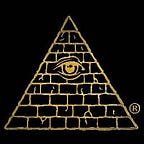Dungeon Fantasy Designer’s Notes 2: Eleven Flavors of Munchkin, a Golf Bag Full of Swords
By Sean Punch
Would-be players of the Dungeon Fantasy Roleplaying Game are doubtless burning to learn what characters can do: What races can they belong to? What careers are open to them and what cool abilities are available? Oh, and what about gear? In short: “What’s in the Adventurers book?”
Adventurers starts from the framework of the GURPS Basic Set: Characters. Players allocate character points to attributes (how strong, how smart, how fast, etc.), advantages (abilities which give “haves” an edge over “have-nots”), and skills (learned knowledge, including all manner of combat arts, skullduggery, social graces, and arcane teachings). Disadvantages — fun flaws, not fatal ones — augment the budget for goodies. And if you want, you can spend points to belong to a nonhuman race or start with better gear.
Unlike Characters, Adventurers doesn’t say, “Here are your points. Good luck!” Old GURPS hands will be glad to hear that’s supported, but by default each hero belongs to one of 11 professions: barbarian, bard, cleric, druid, holy warrior, knight, martial artist, scout, swashbuckler, thief, or wizard. Each is defined by a template, a set of menus that presents a modest subset of the game’s numerous options for easy selection. Each offers special abilities — sometimes advantages, sometimes skills, sometimes magic from the Spells book. And each comes with notes on making choices to customize your character; e.g., the outdoorsy scout could be a crafty hunter of man and beast, a ranger who defends the wilderness, or a dedicated archer.
GURPS Dungeon Fantasy veterans will spot some changes here. Templates are laid out to be more readable, while skill menus are reorganized to clarify what’s mandatory and what isn’t, and to make fighting skills more obvious. What were formerly “power-ups” for advanced characters are often available right out of the gate — and these and the profession’s special skills appear after the template, not hidden in the general advantage and skill lists. A few templates are different; notably, the barbarian is now a fighter first and outdoorsman second, not the opposite (you can thank Dungeon Fantasy Denizens: Barbarians), while the bard is spread between fewer categories of abilities but has better access to magic. For everybody, points have been shuffled to permit more advantages, making nonhuman races more viable.
What races would those be? Cat-folk, dwarves, elves (more specifically, wood elves), gnomes, half-elves, half-ogres, half-orcs, and halflings. These, too, have their special abilities listed alongside them rather than stuck in long lists elsewhere. Almost all race-profession combos are possible, although a couple might need some juggling.
General building blocks open to most professions and races appear in the generous chapters on advantages, disadvantages, and skills (casters must also venture into Spells). GURPS veterans will recognize most of the names and point costs, but there have been tweaks. Some conceits of the Dungeon Fantasy series that weren’t in Characters — like leveled Higher Purpose and new Talents — are standard, while Characters content that’s out-of-genre (like high-tech traits, and most social ones) or horribly complex (Alternate Form, I’m looking at you!) is absent. Adventurers treats perks as cheap advantages, and eliminates enhancements, limitations, and techniques altogether; abilities formerly built from these parts appear “as is,” minus the confusing guts. Skill descriptions have been rewritten completely to offer concrete uses. And certain traits are simply different; e.g., Resistant is more fine-grained, Signature Gear works like gamers always felt it should, Very Rapid Healing is worth the points, and touchy-feely mental problems have become game-mechanically enforceable.
Which leaves gear — a ton of it. The catalog includes every muscle-powered weapon in Characters, a bunch from GURPS Low-Tech and GURPS Martial Arts, and a couple of made-up ones (everybody loves combat shovels and humongous clubs!). Shields. All the armor you could want, piecemeal or in complete suits, and consistent with the well-received Low-Tech rules. Everything so far is modifiable, too — if you want a hatchet that’s also a climbing aid, and spiky armor, go for it! Plus there are pages stocked with miscellaneous equipment, including items from the entire Dungeon Fantasy series. Oh, and magic items for wealthy starting adventurers.
Letting you jump right in was my overarching goal. Special snowflakes might prove challenging — but unlike other games, this one lets you customize with points to solve the problem. Adventurous gamers can step outside the structure to create almost any hero. As in full-blown GURPS, it’s possible to create, say, a warrior-wizard-thief from some obscure, made-up race . . . it just isn’t necessary to learn how to do that in order to play!
